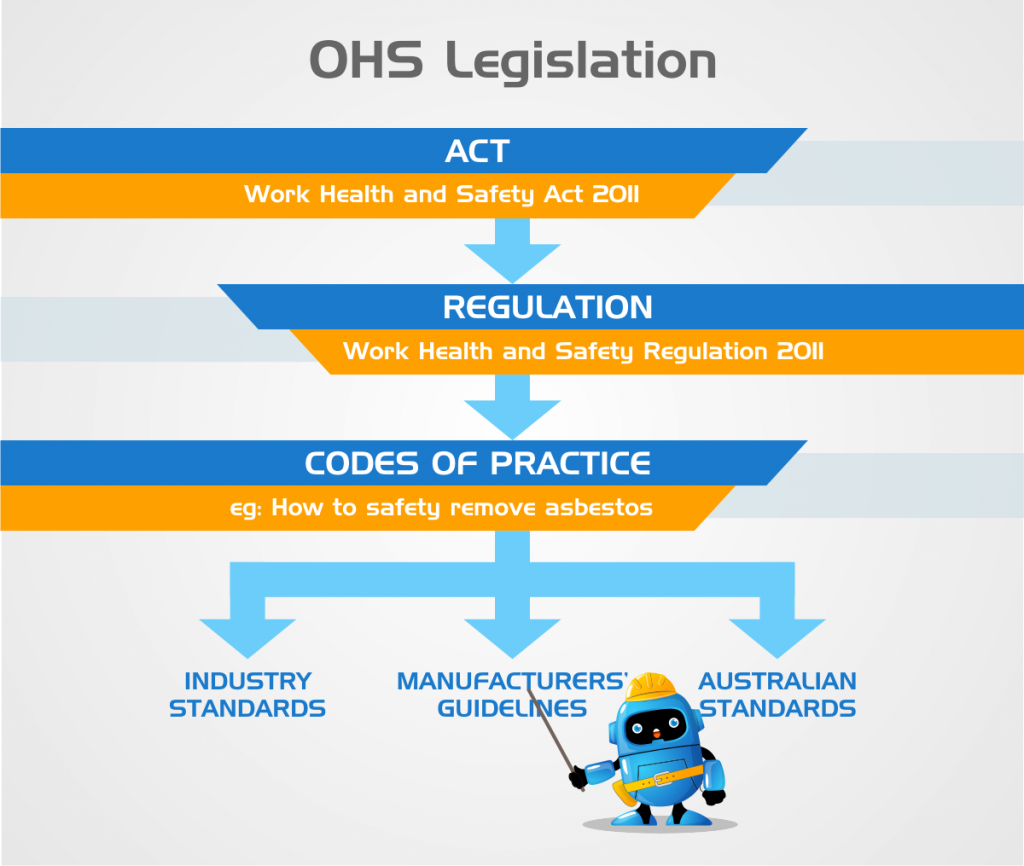OHS Legislation Explained
Interpreting complicated occupational health and safety laws is a hassle that many small and large businesses struggle to find time for. This presents issues because with a range of various penalties and regulations at stake, compliance with safety laws in the workplace is not to be trifled with.
OHS legislation Australia is made up of several different layers, each with its own detail and level of obligation. Understanding this hierarchy is important for not only avoiding preventable safety incidents but also for establishing and maintaining high workplace OHS standards.

The Work Health and Safety Act 2011
The WHS Act defines the roles and obligations that duty holders must comply with. OHS policies and procedures outlined under the Act are legally enforceable and violations of them could result in significant penalties. Every Australian jurisdiction (state or territory) has different regulators but for a broad idea of what enforcement options are available to them, read about Workplace Health and Safety Queensland.
Occupational Health and Safety Regulations
The Work Health and Safety Regulation 2011 supports the WHS Act in more detail. The Act is full of terminology that can be difficult to understand so the regulation works as a more detailed explanation of OHS policy. Specifically, the WHS regulation provides details on methods of compliance, hazard control and other certain obligations in relation to these. Like the Act, WHS regulations must be complied with or strict penalties can be applied.
Codes of Practice
As part of the policy goal of harmonised workplace health and safety laws, Safe Work Australia has published model codes of practice for a variety of high risk construction work. Unlike the WHS Act and regulations, the codes of practice are not legally binding but serve as practical guides for achieving the OHS standards established under the Act. This means that duty holders are not legally required to follow any of the guidelines. However, unless there is another method of controlling risk to an equal degree, it is strongly recommended that duty holders follow the practical guidance offered in the codes of practice. The codes outline safe work practices for a variety of high risk work. For a full list, check out Safe Work Australia’s model codes of practice.
National Health and Safety Standards
This refers to the work practices and benchmarks set out in peak industry standards, as well as manufacturer guidelines. On top of broad national standards, these aim to provide guidance material to a person conducting a business or undertaking (PCBU) who wishes to demonstrate due diligence in eliminating or reducing workplace risk. The guidance material outlined in these standards has no legal status meaning recommendations are not enforceable or mandatory (unless specifically referred to in the WHS legislation).
The hierarchy of Australian OHS legislation sets out the legal obligations PCBU’s must abide by as well as the practical guides for resolving workplace health and safety issues. For more information on health and safety laws and risk assessment procedures, read the SafeWorkPro Blog.

